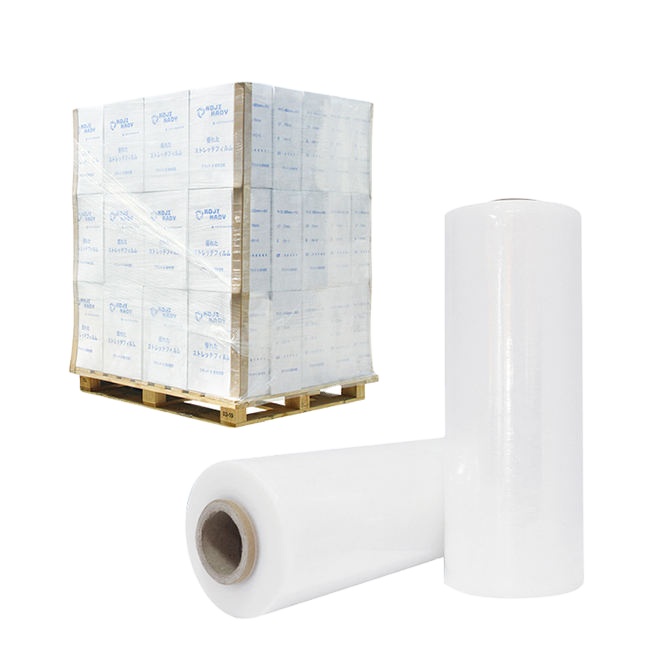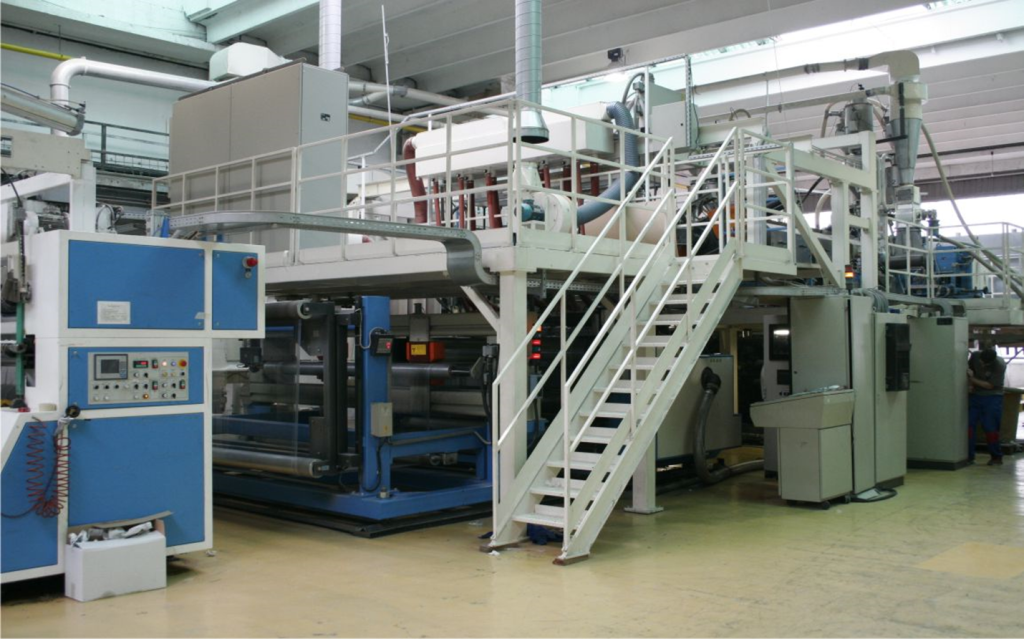When it comes to packaging, stretch film and shrink wrap are two of the most commonly used materials, but they serve different purposes and offer distinct benefits. Both are versatile and provide protection for products during transport and storage, but understanding their differences can help you choose the right one for your specific needs.
What is Stretch Film?
Stretch film is a highly elastic plastic film typically made from linear low-density polyethylene (LLDPE). It is designed to stretch up to 300% of its original size, which makes it ideal for tightly wrapping products. Stretch film can be applied manually or with machines and is commonly used to secure pallets, bundle items, or protect products during shipment.
Key Features of Stretch Film:
- Elasticity: It can stretch without losing its strength, which helps tightly secure items.
- Adhesion: Stretch film sticks to itself, not to the items it wraps, which prevents it from leaving sticky residues.
- Transparency: Allows for easy identification of the wrapped products.
- Durability: Offers high resistance to tearing and puncturing, making it ideal for protecting items from external damage.
What is Shrink Wrap?
Shrink wrap, on the other hand, is a plastic film, usually made from polyethylene (PE) or polyvinyl chloride (PVC), that shrinks tightly around an item when heat is applied. This process, known as heat shrinking, causes the film to contract, forming a snug, custom-fit protective layer around the product. Shrink wrap is commonly used for packaging single items, such as food products, electronics, or small goods, and is often used for retail-ready packaging.
Key Features of Shrink Wrap:
- Heat Activation: Shrink wrap requires heat to shrink and conform to the shape of the product.
- Tight Fit: Once heated, shrink wrap creates a tight, smooth surface around the item, offering a polished appearance.
- Protection: Provides a protective seal that guards against moisture, dirt, and tampering.
- Seals Products: Often used for creating tamper-evident seals, ensuring products stay untouched until opened.
Key Differences Between Stretch Film and Shrink Wrap
1. Application Process
- Stretch Film: Applied manually or with a machine by stretching the film around the product. It doesn’t require heat, making it faster and easier to use.
- Shrink Wrap: Requires heat to shrink the film around the product. This is typically done with a heat gun or a shrink tunnel machine.
2. Functionality
- Stretch Film: Primarily used for securing and stabilizing items, especially for bundling products or securing pallets for shipping.
- Shrink Wrap: Used for sealing and protecting individual items by tightly conforming the film to the shape of the product, which provides a neat and tamper-evident packaging solution.
3. Flexibility
- Stretch Film: Highly flexible and elastic, stretch film can stretch to several times its original length without breaking. This makes it ideal for wrapping irregularly shaped items or large pallets.
- Shrink Wrap: Less flexible as it shrinks to fit the item, making it a better option for small to medium-sized products with consistent shapes.
4. Appearance
- Stretch Film: Offers a transparent finish that allows for easy viewing of the wrapped items. However, it can look less polished compared to shrink wrap.
- Shrink Wrap: Creates a tight, glossy finish around the product, often with a smooth surface, which can enhance the presentation of retail products.
5. Protection
- Stretch Film: Provides protection against shifting, dirt, and moisture, particularly useful for securing items during transport or storage.
- Shrink Wrap: Offers better protection against dust, moisture, and tampering, as the shrinkage process tightly seals the item. It also provides some tamper-evident security features.
Where to Use Stretch Film vs. Shrink Wrap?
-
Stretch Film:
- Best for: Bundling and securing products for shipping, especially for large or irregularly shaped items.
- Applications: Securing pallets, wrapping furniture, bundling multiple products, and wrapping items for storage or transit.
-
Shrink Wrap:
- Best for: Packaging individual items that need to be tightly sealed, especially for retail display or protection from tampering.
- Applications: Food packaging, electronics, toys, and retail products.
Conclusion
While stretch film and shrink wrap may seem similar, their key differences make each better suited for specific tasks. Stretch film is ideal for securing loads and protecting goods during transit, while shrink wrap is perfect for tightly sealing products for retail display, offering a polished look and protection against tampering. By understanding these differences, you can choose the right packaging solution based on your needs.
For more details on packaging materials, visit Packaging Digest or ShrinkWrap Packaging.
Keywords: stretch film vs shrink wrap, difference between stretch film and shrink wrap, uses of stretch film, shrink wrap packaging, stretch film applications




